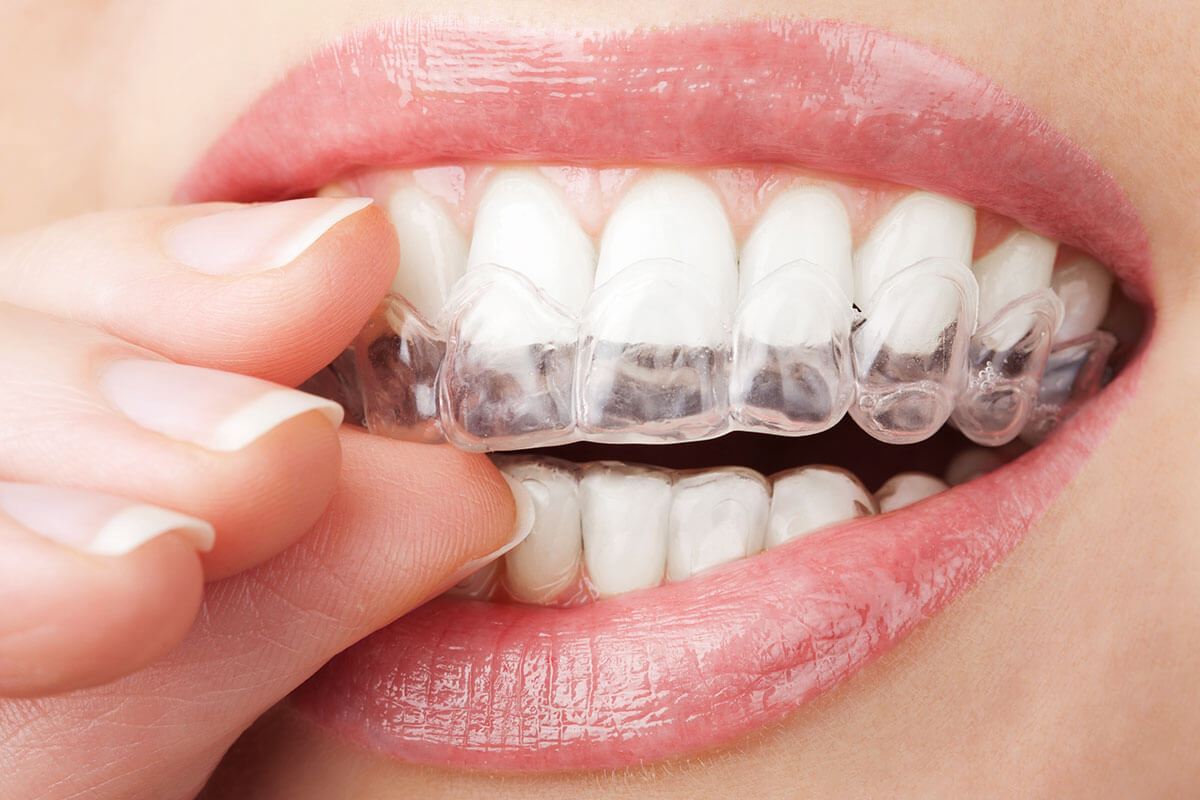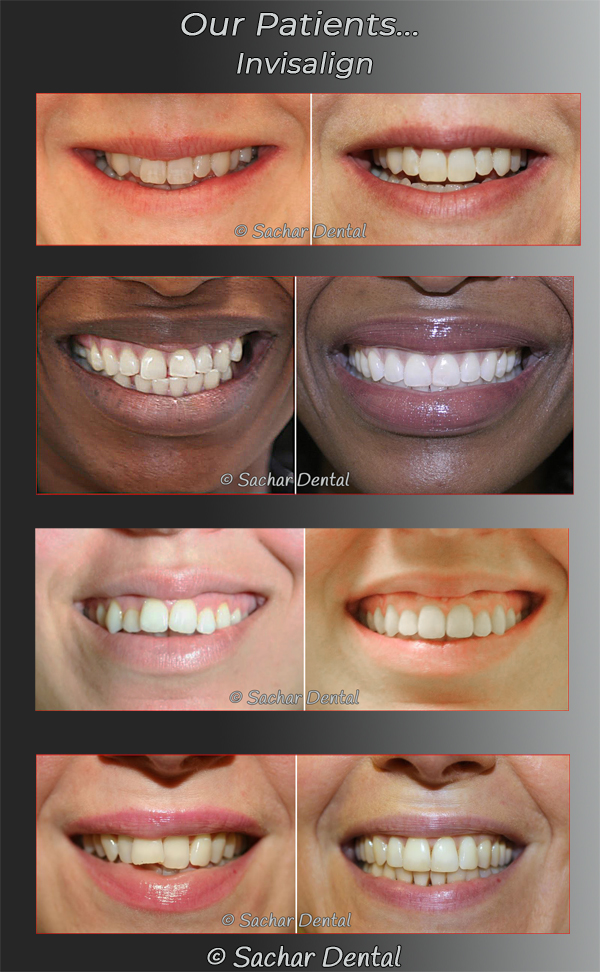Success Stories: How Invisalign Changed Lives and Improved Confidence
Success Stories: How Invisalign Changed Lives and Improved Confidence
Blog Article
Invisalign vs. Typical Braces: Which Option Is Right for You?
When considering orthodontic treatment, the selection in between Invisalign and typical dental braces provides a number of crucial aspects that warrant cautious examination. Invisalign uses a discreet alternative with removable aligners, while traditional dental braces supply a much more visible yet reliable option for severe imbalance.
Introduction of Treatment Alternatives

In comparison, conventional braces contain metal brackets and wires that are bound to the teeth. This approach uses continual pressure with time to attain placement. While reliable for intricate orthodontic issues, conventional dental braces require routine visits for adjustments and can present obstacles in preserving dental health as a result of the trouble of cleaning up around braces and wires.
Both choices have their benefits, and the choice usually rests on specific dental conditions, way of living choices, and client conformity. Inevitably, getting in touch with an orthodontic expert is essential for identifying the most appropriate treatment strategy tailored to individual needs. Understanding the nuances of each option can dramatically influence the total success of orthodontic treatment.
Aesthetic Factors To Consider
A substantial aspect influencing the selection in between Invisalign and typical dental braces is the aesthetic allure each therapy uses. Invisalign aligners are crafted from clear plastic, making them virtually undetectable when put on. This very discreet appearance is specifically attracting grownups and young adults that might feel awkward regarding their orthodontic therapy. The capacity to keep an all-natural smile throughout the positioning process can considerably enhance the person's confidence in social and professional setups.
On the other hand, traditional braces contain metal braces and cables, which can be more obvious. While innovations in orthodontic modern technology have resulted in the development of smaller brackets and colored elastics, standard dental braces still keep an even more noticeable account. For some people, the exposure of dental braces may discourage them from seeking required therapy.
Inevitably, the selection in between Invisalign and standard dental braces may depend upon individual preferences pertaining to aesthetics. Individuals that prioritize discretion often favor Invisalign, while those who are less concerned regarding presence may choose traditional braces. Recognizing the visual implications of each choice is critical for making an informed decision that lines up with one's way of living and preferences.
Convenience and Convenience

In regards to comfort, Invisalign aligners are removable, enabling patients to appreciate their preferred foods without restriction and maintain optimum oral hygiene. Cleaning and flossing are simplified, as the aligners can be taken out throughout these regimens, whereas conventional braces call for cautious maneuvering around braces and cables.
Furthermore, Invisalign's modern system enables less orthodontic check outs. Clients usually get multiple collections of aligners at the same time, which can simplify the therapy procedure and minimize time spent in the orthodontist's chair. On the other hand, conventional dental braces require normal adjustments, making them much less convenient for those with hectic schedules. Invisalign. In general, the comfort and convenience of Invisalign make it an attractive choice for lots of individuals seeking orthodontic therapy.
Therapy Period and Efficiency
While both Invisalign and traditional braces work in remedying dental misalignments, the period of therapy can differ considerably between the 2 choices. Usually, Invisalign therapy can take anywhere from 12 to 18 months, relying on the complexity of the case. The clear aligners work by slowly changing teeth right into their desired positions, and regular follow-ups with an orthodontist assistance make sure progression continues to be on track.
In contrast, traditional braces typically need a longer dedication, normally varying from 18 months to 3 years. This results from their fixed nature and using cables and brackets, Look At This which can be much more efficient for complicated situations and serious misalignments (Invisalign). The treatment effectiveness of conventional braces is well-documented, as they permit precise adjustments and greater control over tooth movement
Ultimately, the choice between Invisalign and typical dental braces might pivot on both the expected treatment duration and the details oral concerns handy. Consulting with an orthodontist is critical, as they can give customized referrals based upon individual needs, guaranteeing the chosen approach straightens with preferred outcomes and durations.
Price Contrast and Insurance Coverage Options
Price plays a considerable role in the decision-making procedure for people considering orthodontic therapy, whether choosing for Invisalign or standard braces. On average, the price of Invisalign varieties from $3,000 to $8,000, while standard braces commonly cost between $2,000 and $6,000. Variables influencing these prices include the intricacy of the case, the period of treatment, and geographical area.
Insurance coverage can substantially impact out-of-pocket expenditures. Numerous oral insurance policy plans give partial protection for orthodontic therapies, but the specifics can differ widely. It is vital for patients to examine their insurance coverage to establish the extent of insurance coverage for either option. Typically, typical braces might be extra frequently covered by insurance policy plans compared to Invisalign, which some insurance firms categorize as an aesthetic treatment.
In addition, numerous orthodontic methods offer versatile settlement plans, making both treatment alternatives more easily accessible. Clients must inquire about his regarding possible funding choices and discount rates for upfront payments. Assessing the overall price, including insurance coverage advantages and settlement strategies, is essential for making a notified decision that aligns with both aesthetic preferences and budget plan factors to consider.

Final Thought
In summary, the choice between Invisalign and typical braces rests on several variables, consisting of visual choices, convenience, treatment duration, and cost. Invisalign provides a discreet, detachable choice that assists in oral hygiene and nutritional versatility, while conventional braces might be preferable for intricate oral issues and commonly come with a reduced price point. Eventually, assessment with an orthodontist is essential to examine specific situations and figure linked here out the most ideal treatment option for achieving ideal dental positioning.
When considering orthodontic treatment, the option in between Invisalign and traditional dental braces provides numerous crucial factors that merit cautious assessment.Comparing Invisalign and typical dental braces discloses distinctive therapy alternatives for orthodontic adjustment.While both Invisalign and traditional dental braces are effective in fixing oral imbalances, the duration of therapy can vary substantially in between the 2 choices.Expense plays a substantial duty in the decision-making procedure for people taking into consideration orthodontic treatment, whether deciding for Invisalign or traditional braces.In recap, the selection between Invisalign and traditional dental braces hinges on several elements, consisting of visual preferences, comfort, therapy duration, and price.
Report this page